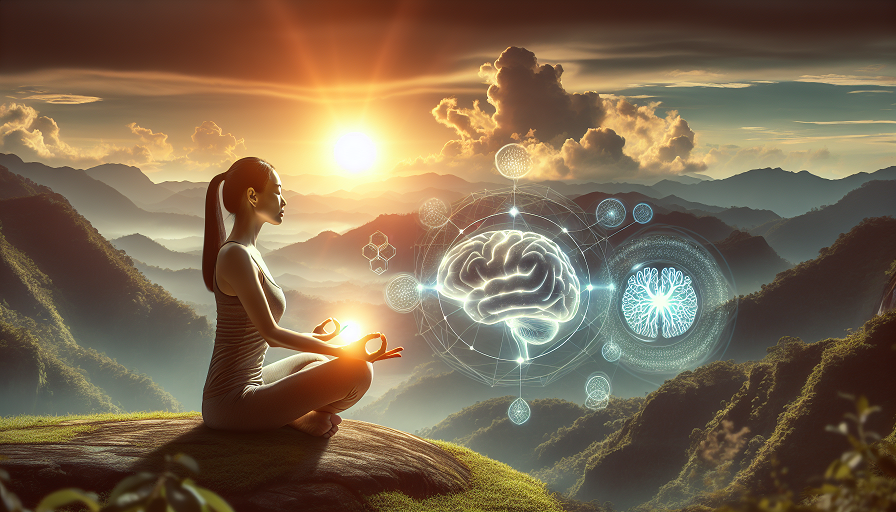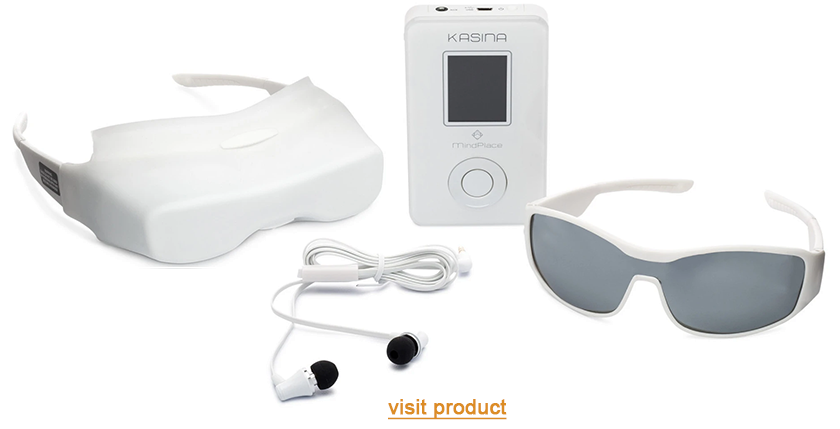
Mental clarity is more than just the ability to focus—it’s the feeling of being fully engaged and aware, free from mental fog or fatigue. And let’s face it, we’ve all been there: staring blankly at a page, re-reading the same sentence, unable to gather our thoughts. Light therapy, commonly known for its relaxation benefits, has evolved as a tool to improve mental clarity too. Beyond the calming effects, light therapy can wake up your brain, enhancing focus and keeping you sharp.
Contents
- What is Light Therapy?
- How Light Therapy Boosts Mental Clarity
- The Role of Light Frequencies in Brain Function
- Using Light Therapy for Cognitive Performance
- Light Therapy and Neurotransmitter Activation
- Integrating Light Therapy with Meditation for Clarity
- Tips for Using Light Therapy to Enhance Mental Clarity
What is Light Therapy?
Light therapy is a method that uses specific types of light to influence brain activity, mood, and even cognitive function. It’s often performed using lightboxes, goggles, or other specialized devices that emit light in certain wavelengths and patterns. While it’s known for benefits like reducing seasonal depression, light therapy is now recognized as a way to stimulate brain function and improve clarity.
The Basics of Light and Brain Interaction
Our brains are naturally wired to respond to light. The right type of light, especially blue and white light, triggers biochemical reactions in the brain. Think of it like the way sunlight boosts your mood on a bright day—specific wavelengths can energize your brain, increasing alertness and improving focus. For centuries, people have been drawn to the idea that light can influence the mind, but now we have science to back it up.
How Light Therapy Boosts Mental Clarity
The primary mechanism behind light therapy’s effect on mental clarity is its influence on brainwaves and neurotransmitters. Different frequencies of light stimulate various brainwave patterns, such as alpha waves for calm focus or beta waves for alertness. When you’re feeling foggy, light therapy can guide your brain into the rhythms associated with clear thinking.
Brainwaves and Mental Focus
Brainwaves are the electrical pulses generated by neuron activity. The four primary types—alpha, beta, theta, and delta—are each linked with specific mental states:
- Alpha Waves: Associated with relaxation and calm focus, helping to clear mental clutter.
- Beta Waves: Linked with alertness, concentration, and quick thinking. When we need to focus, beta waves increase.
- Theta Waves: Present during drowsiness or deep relaxation, contributing to creative insight.
- Delta Waves: Primarily occur in deep sleep, supporting restoration and healing.
Light therapy can stimulate beta waves when you need focus or alpha waves when you’re aiming for calm attention. By tailoring light therapy to your brain’s needs, it’s possible to create an environment where mental clarity flourishes.
The Role of Light Frequencies in Brain Function
Different colors and frequencies of light each have unique effects on the mind. While blue light enhances wakefulness, red light may increase alertness, and green light can help balance emotions. Let’s dig into how specific frequencies influence mental clarity.
Blue Light for Alertness
Blue light is perhaps the most well-studied for its effects on wakefulness and alertness. It suppresses melatonin, the sleep hormone, making us feel more awake. Many light therapy devices use blue light to boost energy levels during the day, which is especially useful when you need a mental “pick-me-up” without reaching for caffeine. However, blue light should be used with care, as exposure in the evening can disrupt sleep cycles.
Green Light for Balance
Green light is calming but doesn’t make you drowsy, making it ideal for creating a balanced, focused state. It’s a go-to for when you want mental clarity without the jitters that sometimes accompany blue light. People using green light often report feeling calm yet focused, an excellent combination for studying or brainstorming.
Red Light for Grounded Energy
Red light is energizing but gentler than blue. It can improve alertness and physical energy without overstimulation, ideal for morning meditation or mindfulness practices. Red light helps anchor your focus, giving you a sense of being alert and present without feeling rushed or anxious.
Using Light Therapy for Cognitive Performance
With the right setup, light therapy can become part of your daily routine, enhancing mental performance over time. Just like exercise strengthens muscles, consistent light therapy can strengthen mental clarity and focus. Here’s how to make the most of it:
- Choose the Right Time of Day: For alertness and focus, use light therapy in the morning or early afternoon. Avoid it too close to bedtime, especially if you’re using blue light, as it can interfere with sleep.
- Set an Intention: Before each session, decide on your goal, whether it’s improved focus, clarity, or relaxation. This intention will guide you to choose the right color and brightness level.
- Be Consistent: Light therapy isn’t a one-time fix. The benefits build over time, so aim for regular sessions, even if just 10-20 minutes a day.
Making light therapy part of your routine can shift how your brain responds to daily challenges. As your brain adapts to this regular “workout,” you may notice less mental fatigue and quicker recall, even on tougher days.
Light Therapy and Neurotransmitter Activation
Neurotransmitters are chemicals in the brain that influence mood, focus, and overall mental function. Light therapy stimulates neurotransmitters like serotonin and dopamine, both crucial for mental clarity. Serotonin helps with focus, mood stability, and a general sense of well-being, while dopamine is linked to motivation and reward, keeping you mentally engaged.
Boosting Serotonin and Dopamine
Serotonin levels are closely related to exposure to bright light, which is why spending time outdoors can lift your mood. Light therapy can mimic this effect, helping maintain serotonin levels even when natural sunlight is limited. This is why light therapy is so beneficial for those experiencing seasonal mood issues, as well as anyone who needs a boost in focus and clarity.
Dopamine, the “motivation molecule,” is also influenced by light exposure. With regular light therapy, dopamine production is stimulated, promoting alertness and energy. Think of it as your brain’s natural coffee shot, minus the crash. Light therapy offers a way to harness these neurotransmitters in a natural, controlled way, boosting mental clarity and focus when needed most.
Integrating Light Therapy with Meditation for Clarity
Combining light therapy with meditation can amplify the effects of both practices. Light therapy adds a physical, visual element to meditation, anchoring the mind and encouraging a calm, focused state. For those who struggle with mental clutter during meditation, light therapy provides a point of focus, helping the mind settle more quickly.
How Light Therapy Guides Focused Meditation
When practicing meditation with light therapy, the mind aligns with the rhythms and colors of the light. The result is a more immersive experience where mental clarity is the focus. This can be especially useful for people who find their minds wandering during traditional meditation.
For example, blue light might be used during meditation to clear mental fog and promote alertness, while green light can create a steady, balanced focus, making it easier to stay present. Red light could be useful for grounding, keeping you anchored in the moment.
Tips for Using Light Therapy to Enhance Mental Clarity
Ready to add light therapy to your mental clarity routine? Here are some practical tips to get the most out of each session:
- Experiment with Colors: Don’t be afraid to try different colors and see how they impact your mood and focus. Each session might call for a unique color based on how you’re feeling.
- Start Small: Begin with short sessions, around 10 minutes, and gradually increase the time as you become accustomed to the effects.
- Find Your Optimal Brightness: Brightness plays a big role in how light affects you. Too much light can be overstimulating, while too little might not be effective. Adjust to what feels comfortable.
Integrating light therapy for mental clarity doesn’t require a huge commitment, but consistency makes all the difference. Over time, you’ll likely notice an improvement in your focus, energy, and overall clarity.
Whether you’re seeking focus, clarity, or a mental reset, light therapy offers a unique way to support your mind. With the right setup and a bit of practice, it can transform moments of mental fog into clear, productive thinking. Sometimes, all you need is a little light to brighten your mind.

